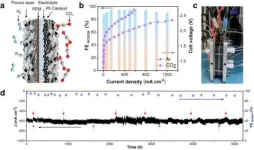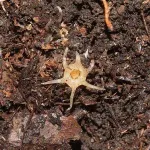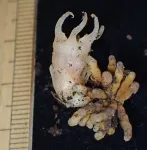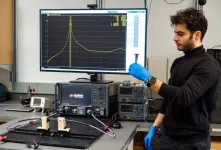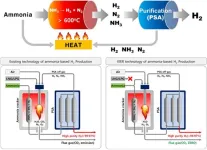USTC realizes durable CO2 conversion in proton-exchange membrane system
2024-02-29
(Press-News.org)
The metabolic process of bilirubin has been a focus in medical research since the abnormal accumulation of bilirubin has been found to be associated with a variety of diseases. Bilirubin is a substance produced by the breakdown of aging or damaged red blood cells, and its effective removal is essential for human health.
A research team led by Prof. CHEN Yuxing and Prof. ZHOU Congzhao from the University of Science and Technology of China (USTC) of the Chinese Academy of Sciences has revealed the three-dimensional structure and working mechanism of the human bilirubin transporter ABCC2. The study was published in Nature Communications.
The researchers analyzed the structure of the ABCC2 protein determined by single-particle cryogenic electron microscopy (cryo-EM) in three different forms: the apo-form, the substrate-bound form and the ATP/ADP-bound structures. They proposed a unique regulatory domain (R domain) that precisely controls ABCC2 substrate recognition and transport.
The R domain was folded into a hairpin structure that helped the ABCC2 protein stay still before it encountered bilirubin. But when it bound to a physiological substrate analogue, bilirubin ditaurate (BDT), the hairpin part moved away. Besides, the R domain helped proteins select high-affinity conjugated bilirubin for preferential outward transport. The protein then changed its conformation in response to the hydrolysis of ATP, releasing the substrate into the duct.
In particular, the researchers pointed to a specific ABCC2 mutant (R1150H) that weakens the function of the R domain and leads to decreased transport activity, which explained the molecular mechanism of diseases such as Durbin-Johnson syndrome.
This study identified the key role of ABCC2 protein in the treatment of bilirubin under the fine regulation of the R domain, providing a new perspective for understanding bilirubin metabolism and a possibility for targeted treatment of the related genetic diseases.
END
ELSE PRESS RELEASES FROM THIS DATE:
2024-02-29
A new species and genus of fairy lantern, tiny glass-like white plants that feed on fungi, has been discovered in Japan. In the country renowned for its extensive flora research, the discovery of a new plant genus is extremely rare and has not occurred in almost 100 years.
Fairy lanterns, or Thismiaceae as they are known to botany, are very unusual plants found mainly in tropical but also in subtropical and temperate regions. First of all, they are not green and do not engage in photosynthesis, but rather feed on fungal mycelia in the ground. As a consequence, they are often hidden under fallen leaves and only for a brief period produce above-ground flowers that look like glasswork. The ...
2024-02-29
PHOENIX, February 29, 2024 — Research on patient-centered treatment of head and neck cancers will be presented at the 2024 Multidisciplinary Head and Neck Cancers Symposium, which takes place in Phoenix and online today through March 2. Media registration is available via our press kit, and general registration is available via the meeting website.
Seven high-impact studies recommended by symposium leadership for media are noted below. All abstracts are available online. Experts are available to provide outside commentary and perspective on research at the meeting; ...
2024-02-29
Over the past two decades, the immune system has attracted increasing attention for its role in fighting cancer. As researchers have learned more and more about the cancer-immune system interplay, several antitumor immunotherapies have become FDA-approved and are now regularly used to treat multiple cancer types.
Yet despite these advances, much remains unknown about how the immune system fights cancer — and about immunity in general, said Martin LaFleur, a postdoctoral fellow in the laboratory of Arlene ...
2024-02-29
In a first-of-its-kind development, UBC Okanagan researchers, in collaboration with Drexel University, have created a new compound that can be used to 3D print telecommunication antennas and other connectivity devices.
These 3D printed products, created by combining a two-dimensional compound called MXenes with a polymer, can be used as an alternative for metallic counterparts and can make a vast improvement in communication technology including elements such as antennas, waveguides and filters.
Waveguides are everywhere, yet most people don’t know what they are, says Dr. Mohammad Zarifi, a researcher in UBC Okanagan’s Microelectronics and Gigahertz ...
2024-02-29
An estimated 4 to 8 million older adults with mild cognitive impairment are currently driving in the United States, and one-third of them will develop dementia within five years. Individuals with progressive dementias are eventually unable to drive safely, yet many remain unaware of their cognitive decline.
Currently, screening and evaluation services for driving can only test a small number of individuals with cognitive concerns, missing many who need to know if they require treatment.
Nursing, engineering and neuropsychology researchers at Florida Atlantic University are testing and evaluating a readily and rapidly available, unobtrusive in-vehicle sensing ...
2024-02-29
(LOS ANGELES) – February 29, 2024 - The Terasaki Institute for Biomedical Innovation (TIBI) is pleased to announce their selection of Professor Nicholas A. Peppas of The University of Texas at Austin as the recipient of the 2024 Paul Terasaki Distinguished Scientist Innovation Award. The award will be presented at TIBI’s 2nd annual Terasaki Innovation Summit, to be held March 27-29, 2024, at the UCLA Meyer & Renee Luskin Conference Center.
The award was created in memory of Dr. Paul I. Terasaki, a pioneer in organ transplant research and innovation. It recognizes outstanding achievement in the field of biomedical ...
2024-02-29
(LOS ANGELES) – February 29, 2024 - The Terasaki Institute for Biomedical Innovation (TIBI) is pleased to announce their selections of Assistant Professors Amir Manbachi of Johns Hopkins University and Ritu Raman of the Massachusetts Institute of Technology (MIT) as the recipients of the 2024 Hisako Terasaki Young Innovator Awards. The awards will be presented at TIBI’s 2nd annual Terasaki Innovation Summit, to be held March 27-29, 2024, at the UCLA Meyer & Renee Luskin Conference Center.
The award was created in memory of Hisako Terasaki, philanthropist, accomplished artist, and wife ...
2024-02-29
The latest Canada’s Food Guide presents a paradigm shift in nutrition advice, nixing traditional food groups, including meat and dairy, and stressing the importance of plant-based proteins. Yet, the full implications of replacing animal with plant protein foods in Canadians’ diets are unknown.
New research at McGill University in collaboration with the London School of Hygiene & Tropical Medicine provides compelling evidence that partially substituting animal with plant protein foods can increase life expectancy and decrease greenhouse gas emissions. Importantly, ...
2024-02-29
More than ever before, there is a growing interest in dedicating resources to stop the loss of biodiversity, as recently exemplified by the Kunming-Montreal Global Biodiversity Framework (GBF) decided at COP15 in December 2022. The GBF focuses on understanding why biodiversity is declining and what actions are needed to reverse this trend. However, according to researchers at McGill University, implementing the plan is challenging because information about biodiversity changes is not evenly available everywhere, and is uncertain in many places.
With the available data, can the ...
2024-02-29
Dr. Jung Unho's research team at the Hydrogen Research Department of the Korea Institute of Energy Research (KIER) has developed Korea's first clean hydrogen production technology. This technology is based on ammonia decomposition and does not use fossil fuels. The team's breakthrough could pave the way for a more sustainable and eco-friendly energy source. This allows for the production of high-purity hydrogen that meets international standards for hydrogen-powered vehicles, without the carbon dioxide emissions produced by using fossil fuels.
Ammonia, a compound of hydrogen and nitrogen, has a hydrogen storage density 1.7 times ...
LAST 30 PRESS RELEASES:
[Press-News.org] USTC realizes durable CO2 conversion in proton-exchange membrane system
